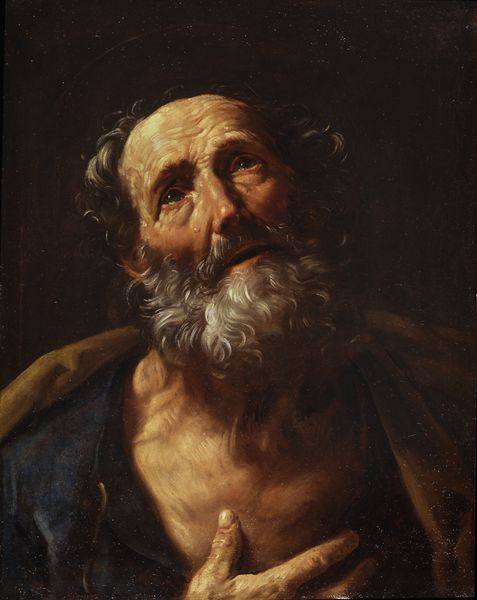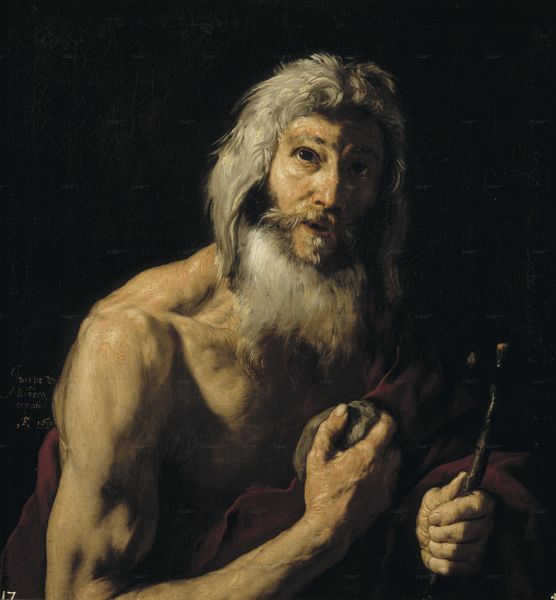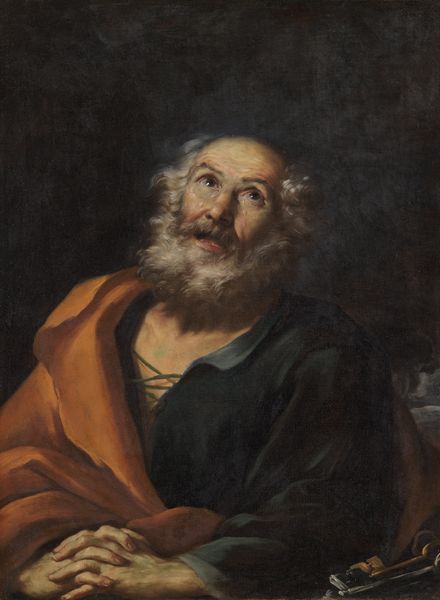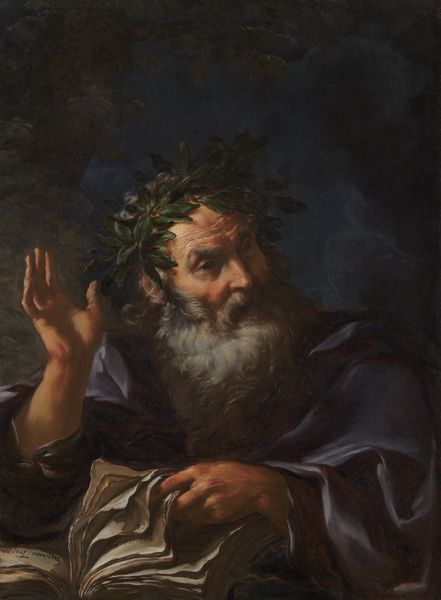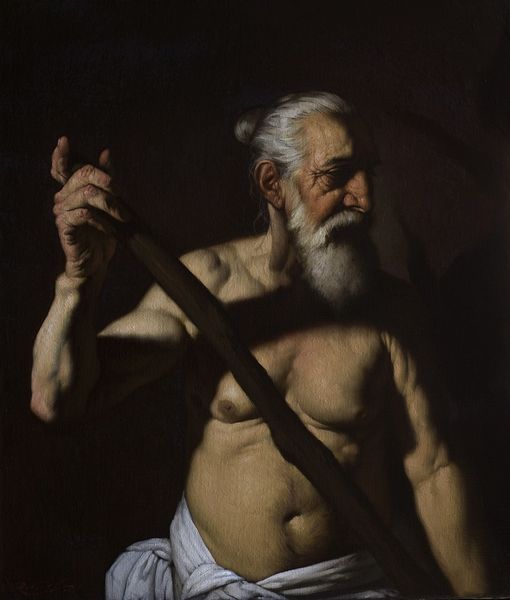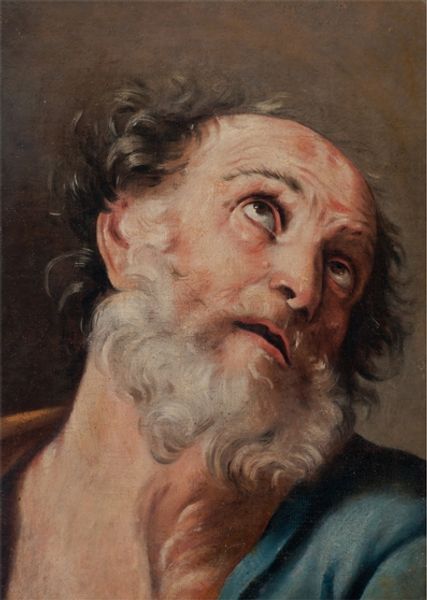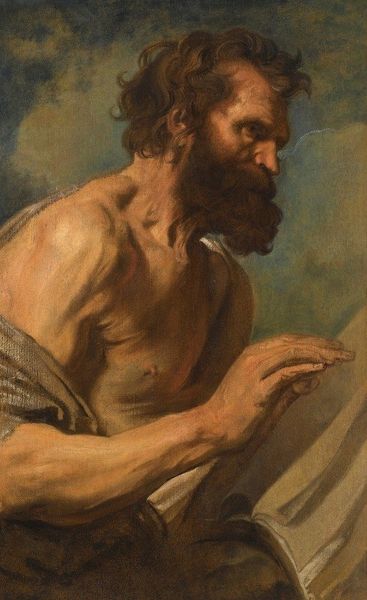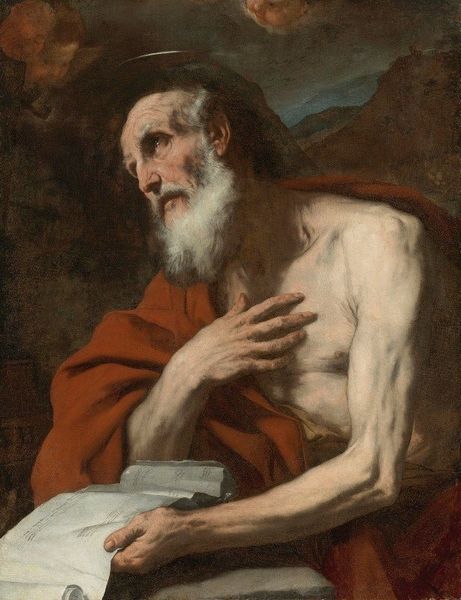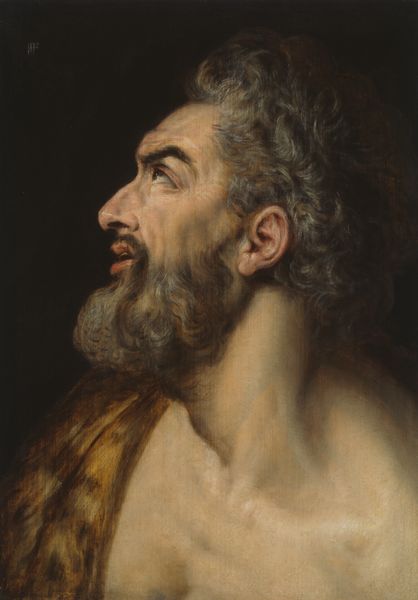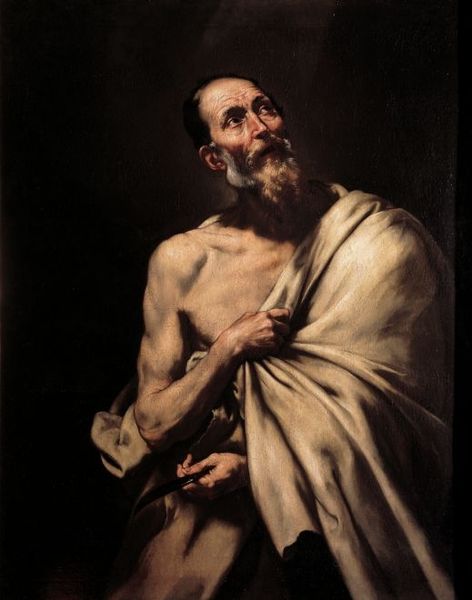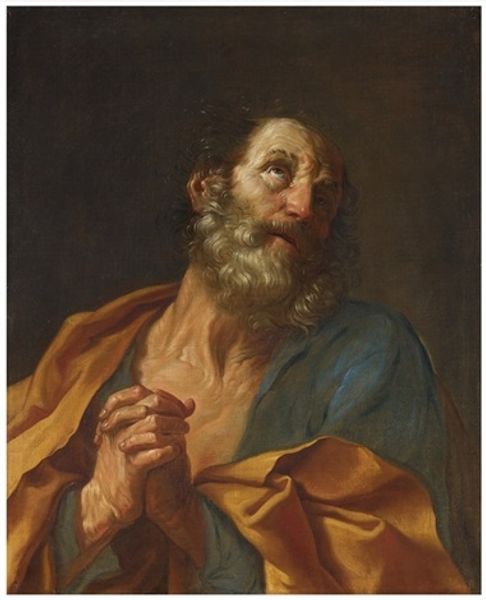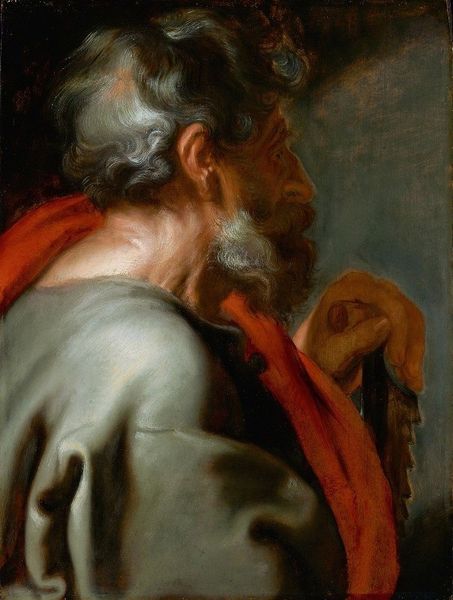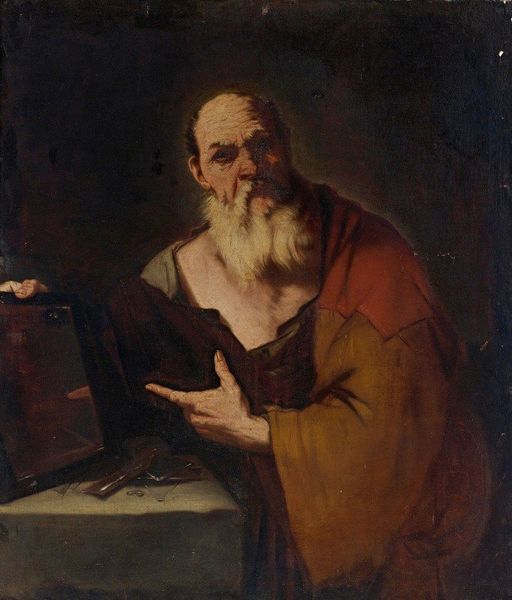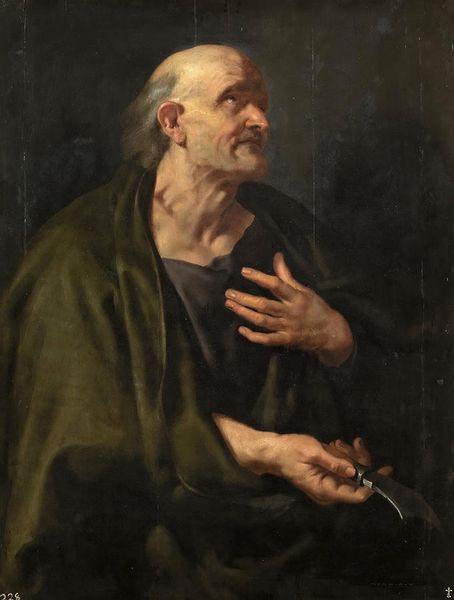
painting, oil-paint
#
portrait
#
baroque
#
painting
#
oil-paint
#
history-painting
#
nude
Dimensions: 111.0 x 89.0 cm
Copyright: Public Domain
Editor: Here we have Giacinto Brandi's "Hermit Saint", thought to have been painted sometime between 1670 and 1680, and rendered in oil on canvas. The figure is striking, so austere in its simplicity, with all the muted tones and textures. What catches your eye, particularly? Curator: Beyond the Baroque style, the focus on materiality raises some interesting questions. Look at the impasto, the way Brandi manipulates the oil paint. What does it tell us about the artist’s workshop practices? Was this piece made for a wealthy patron or for a more popular audience, and how did that influence the use of pigments and canvas? Editor: So, you're thinking about the painting as an object, a product of its time? Curator: Exactly! Think about the social context too. Italy in the 17th century was deeply religious. How did workshops operate in relation to the religious authorities? Also consider the cloth partially draped over his lap. What does that fabric signify materially and economically? Editor: It's a simple enough detail, but one with far-reaching implications, like how different layers of meaning could be embedded through material representation. It brings to light Brandi’s awareness, or perhaps unawareness, of the society and workshop to which he belonged. Curator: Indeed. How labor, access to materials, even the consumption of art, all informed its creation. Brandi probably thought about it as an allegorical representation, but for us today, that can mean different things! What new perspectives are offered if you place him within a history of class and power relations? Editor: I guess seeing it this way adds depth and dimension, literally and figuratively. It's more than just the art, but the whole economy of art-making and the history behind even its smallest element. Curator: Precisely. By shifting our focus to the production process, we're moving beyond simple iconography.
Comments
stadelmuseum about 2 years ago
⋮
This hitherto unknown painting entered the Städel Collection in the end of 2017 as a generous gift from its former private owner. It shows a half-length figure of a seated saint with his hands folded in prayer and leaning on a stack of books. Having turned suddenly to his right, the white-haired old man is shown gazing up into the sky, as if an angel or the Lord himself had appeared to him there. The beam of bright light shining down from the same direction makes the saint glow against the surrounding darkness. His naked body, clothed only in a cloak wound round his loins and over his left arm, is powerfully built, even if marked by age and privation. Clearly this is one of the hermit saints who spent his life praying and doing penance in the wilderness. Saint Paul the Hermit, perhaps also Saint Jerome or Saint Bartholomew are all possible candidates, although unambiguous attributes are lacking.Stylistically, the painting can in all probability be attributed to the Roman Baroque painter Giacinto Brandi, who in the second half of the 17th century furnished the interiors of a number of major churches with both frescos and altarpieces. For a while he was head of the Accademia di San Luca, the painters’ academy in Rome. As a late example of the chiaroscuro technique initiated by Caravaggio and Ribera, the work marks a fitting addition to the Städel’s holdings of Baroque painting from Rome and Naples.
Join the conversation
Join millions of artists and users on Artera today and experience the ultimate creative platform.
